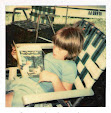Death of a Doll (1947) by Hilda Lawrence
Hope House, a boarding house for young women, is run by the very genteel Monica Brady and her assistant Angelina "Angel" Small. Seventy girls are given bed, two meals a day, hot water and the opportunity to make friends. The story opens with Ruth Miller, a clerk at Blackman's department store, who has been able to take advantage of an opening at the boarding house. She is so pleased about the fact that she's finally found a place with hot water that she tells her favorite customer, the wealthy young Roberta Sutton, all about it. Roberta has taken an interest in the girl and isn't sure that Hope House is the paradise Ruth thinks. She promises herself to check in on Ruth when she returns from a visit to the country, but when she gets back Ruth is no longer at the store. She is shocked to discover that the young clerk has died from an apparent suicide.
The doctor on the scene and the police quickly declared it a suicide-though why she should have jumped from her seventh floor room window during costume party where all the girls were dressed as rag dolls is hard to fathom. But Miss Brady and Miss Small both say that Ruth was having trouble fitting in and seemed very withdrawn, nearly depressed--and that is that. Except--Roberta doesn't believe it for a minute. When she left Ruth, the girl was excited about her new living arrangements. And--just the day before the party Ruth had bought a new blue suit that shed been saving up for. Roberta asks her friend Mark East, an investigator, to nose around and see what he can find out. Why would a girl whose luck was on the upswing jump to her death? What the reader knows--but Mark will have to find out--is that in the short time Ruth was at Hope House she had found someone from her past. Someone who scared her upon sight. But who in Hope House is the menacing figure from the past and why did Ruth have to die?
Hope House is full of tension and unexplained suspicion. Beulah Pond, friend of both Mark and Roberta, says that the house "stinks" with an unpleasant atmosphere and once he starts investigating Mark can't disagree. This is in effect even before Ruth meets up with the enemy from the past. I suspect Lawrence was trying for suspense, but I just found it overly oppressive without building any desire in me to investigate the source of the atmosphere. And Mark's detective work, paired with that of Beulah and her tag-along Bessy, seems even more lackluster and haphazard than in the previous book I read.
On the positive side--there was a major clue to the culprit's identity dropped right in my lap and I missed it. So, Lawrence did a nice bit of misdirection there. But overall I just can't say I recommend her books. When I read my first Lawrence book, Blood Upon the Snow, I said that it was an "almost" kind of book and I gave it 2.5 stars. I followed that with a non-Mark East book, The Pavilion, and it was a bit better--but given that I awarded 2.75 stars, I'd say it still didn't quite hit the target. And here we are again. Death of a Doll is even less captivating than the previous two, so I suspect Hilda Lawrence is an "almost" kind of detective novelist. I've still got one more Lawrence mystery on the TBR stack: A Time to Die, the second of the Mark East books. Maybe that will wind up being her masterpiece...but I'm not going to hold my breath. ★★
For different takes on this novel, please see Kate's review at Cross Examining Crime and John at Pretty Sinister Books.
First line: Angeline Small stepped out of the elevator at five o'clock and nodded to Kitty Brice behind the switchboard.
Last line: He answered Roberta, but to himself. He said, Poor Monny.
*******************
Deaths: one fell from height









.jpg)

.jpg)
.jpg)

.jpg)
.jpg)



.jpg)




.jpg)



















